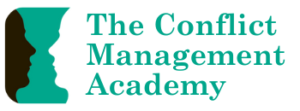Conflict, power and organizational change by Deborah A. Colwill (2022)
This new book explores the relationship between conflict, power and change as they relate to the everyday life of the organizational members and leaders. It includes chapters on each topic, and a concluding chapter about the relationship between the three. Each chapter provides a useful overview of a broad range of theories relating to each topic, and also some case studies and questions for reflection.
Colwill recognizes that conflict is inevitable in organizational life, especially during times of organizational change and that how conflict is viewed and specifically practiced in organizations in crucial.
In Chapter 2, Colwill explores three points of focus needed for navigating conflict, using the metaphors of balcony (big picture), road (daily activities) and moorings (values and identity). The following three chapters explore the topics of conflict, power and change using these three points of focus. The chapter on power includes a discussion of modes of power, assumptions and motivations in use of power, and cultural power dynamics. It also includes practical examples of different uses of different modes of power in organizational settings (e.g. examples of power over, examples of power with).
The final chapter explores how conflict, power and change play out in three differnet organizational arenas: individual employees’ capacity, people working together, and the situational pressures of organizational life.
This book is a great overview of conflict, power and change in organisations, and will be useful for anyone working in or with organizations experiencing conflict.Acknowledging the ongoing debate about what is and is not an “emotion”, Brené includes in the book things that are generally accepted as “emotions”, as well as what she describes as “experiences” that are related to emotions. She provides an overview of how these show up in our bodies (biology), how our families and communities shape our beliefs about the connection between our feelings, thoughts, and behavior (biography), helps us examine our go-to behaviours and recognize the context of what we are feeling or thinking (the importance of our backstories).
The emotions and experiences are presented in categories or families of emotions and experiences that are similar or related in some way. For example, the first category “places we go when things are uncertain or too much” includes a discussion of stress, overwhelm, anxiety, worry, avoidance, excitement, fear and vulnerability.
This book will help you to notice, understand and communicate your emotions and emotional experiences in a nuanced way. In turn, this will help you better manage your emotions and their expression, and enhance your connection with others. It’s essential reading for anyone who works with people in conflict, when emotions run high and sometimes language gets lost.
Each chapter provides an accessible summary of what the author calls “the new stuff” – recent research that has potential practical application to mediation (including some of the disagreements and controversies related to that research). He also provides specific suggestions about how the research might inform our practice of mediation.
The book contains a wealth of information, but the sheer breadth of topics covered means that each topic is not covered in depth. Despite this, there are many ideas to form the basis of reflection and developing your practice.

